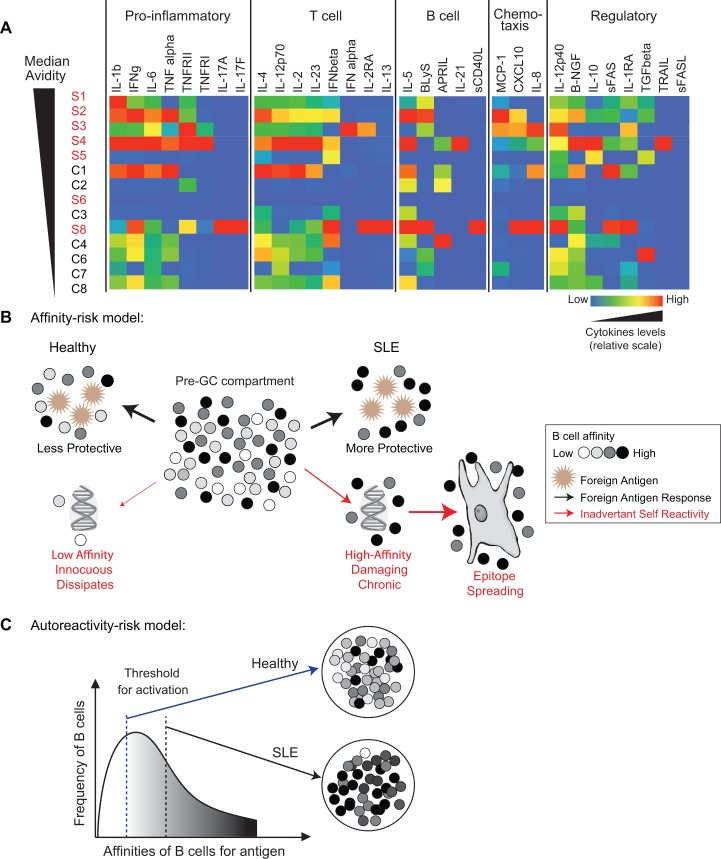Fig 4. Distinct serum cytokine profiles seen in subjects with high avidity antibodies and models discussing the production of high affinity antibodies in context of autoimmunity.
(A) The levels of various cytokines in the serum of subjects, measured by multiplex bead assay, are shown on a graded color scale. Cytokines are grouped according to their major roles in immune responses and subjects are ranked by the median avidity of each subject as shown in Fig 1D. Serum cytokine levels were normalized by the minimum (blue) and maximum (red) values within each dataset. (B) The affinity-risk model postulates that individuals who have the propensity to make high affinity responses will have higher risk for autoimmunity, especially if primary B cell tolerance mechanisms are also disrupted and the naïve B cell population is more self-reactive than normal. Thicker red arrows indicate greater probability of the event. (C) The autoreactivity-risk model proposes that anergy (or other factors) may be contribute to the increased activation threshold of self-reactive B cells in SLE patients so that only B cells with high enough affinity for the antigen are activated, thus skewing the response towards a higher affinity B cell response.

